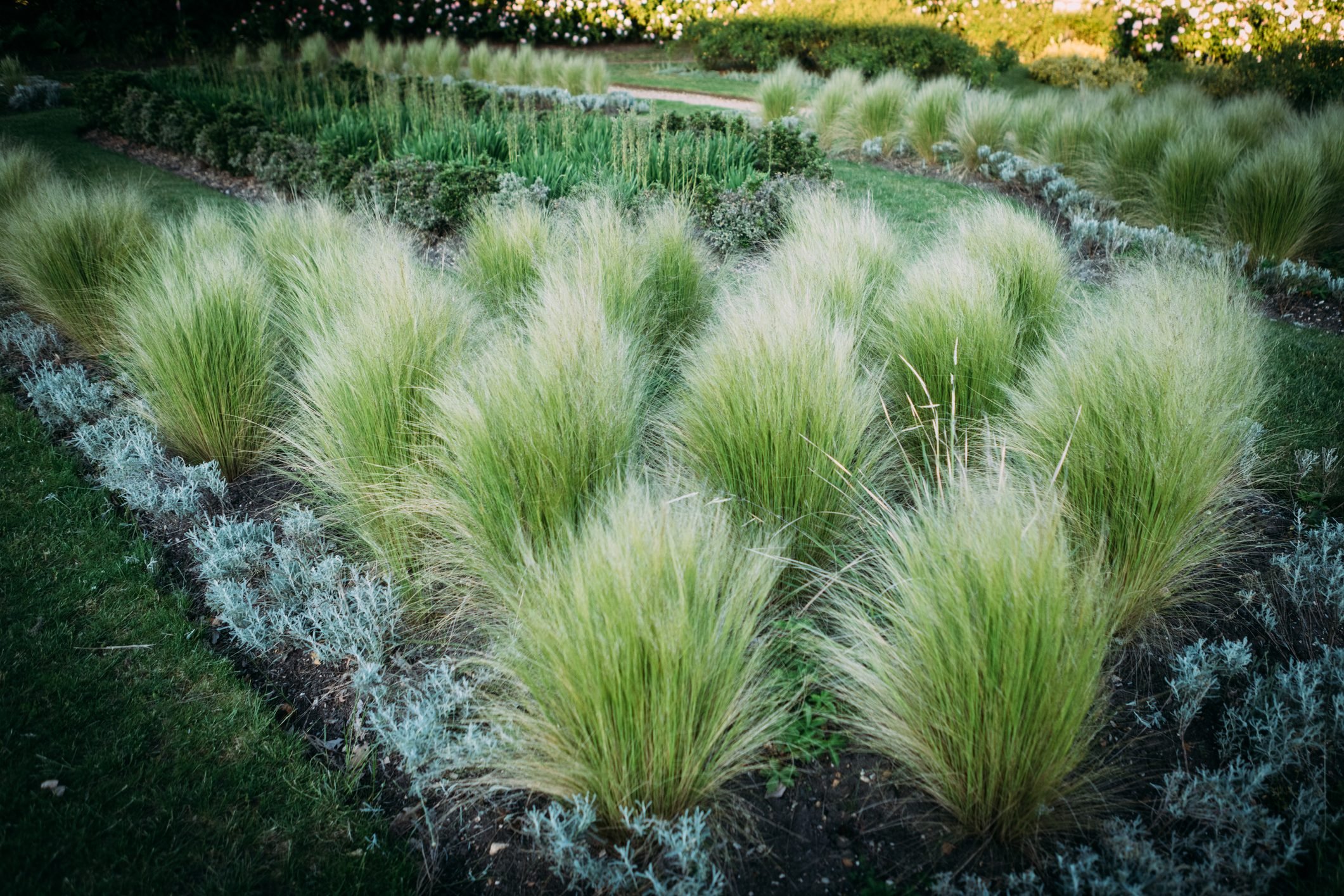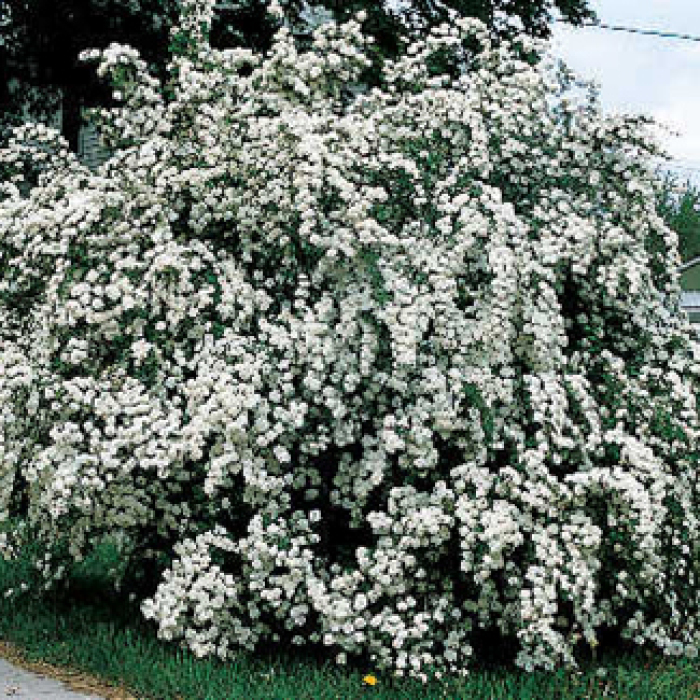Stunning Companion Plants For Bridal Wreath Spirea
Bridal wreath spirea (Spiraea x vanhouttei) is a popular flowering shrub that is known for its cascading clusters of white flowers in spring. It is a relatively easy plant to care for and can tolerate a wide range of conditions. However, to really make your bridal wreath spirea stand out, you can plant it with some complementary companion plants.
When choosing companion plants for bridal wreath spirea, there are a few things to keep in mind. First, you want to consider the size and growth habit of the plants. Bridal wreath spirea can grow up to 6 feet tall and wide, so you need to choose companion plants that will not overwhelm it. You also want to consider the bloom time of the plants. Bridal wreath spirea blooms in spring, so you want to choose companion plants that bloom at different times of the year to extend the interest in your garden.
Here are a few stunning companion plants for bridal wreath spirea:
- Ornamental grasses: Ornamental grasses add a touch of elegance and movement to any garden. They come in a variety of sizes and colors, so you can find the perfect ones to complement your bridal wreath spirea. Some good options include blue oat grass, fountain grass, and Japanese forest grass.

- Hostas: Hostas are shade-loving perennials that come in a wide range of colors and leaf patterns. They are a great choice for planting under bridal wreath spirea, as they will help to fill in the space and provide some much-needed shade during the hot summer months.

- Butterfly bush: Butterfly bush is a tall, airy shrub that is covered in fragrant flowers in summer. It is a magnet for butterflies and other pollinators, so it is a great choice for gardens that are wildlife-friendly.

- Daylilies: Daylilies are another great choice for pollinator-friendly gardens. They come in a wide range of colors and bloom for weeks on end. Daylilies are also relatively easy to care for, making them a good choice for beginner gardeners.
- Clematis: Clematis are vining plants that can be trained to climb up bridal wreath spirea. They come in a variety of colors and bloom in spring, summer, or fall. Clematis can add a touch of elegance and drama to any garden.
These are just a few of the many stunning companion plants that you can plant with bridal wreath spirea. By choosing the right plants, you can create a beautiful and harmonious garden that will bloom all season long.
Bridal wreath spirea is a beautiful flowering shrub that can add a touch of elegance to any garden. But did you know that there are a number of companion plants that can help to enhance the beauty of your bridal wreath spirea?
Some of the best companion plants for bridal wreath spirea include:
- Russian sage: This spiky, fragrant herb has purple flowers that bloom in the summer. It's a perfect contrast to the white or pink flowers of the bridal wreath spirea. Gardenia Inspiration
- Evergreen shrubs: Evergreen shrubs, such as juniper or holly, can provide a year-round backdrop for your bridal wreath spirea. They can also help to anchor the shrub in place and prevent it from blowing over in the wind.
- Ornamental grasses: Ornamental grasses, such as miscanthus or fountain grass, can add movement and texture to your garden. They can also help to fill in any gaps between your bridal wreath spirea and other plants.
- Perennials: Perennials, such as astilbe or columbine, can provide long-lasting color in your garden. They can also help to add interest to your garden in the spring and fall, when the bridal wreath spirea is not in bloom.
To learn more about companion plants for bridal wreath spirea, please visit Gardenia Inspiration. This website has a wealth of information on a variety of gardening topics, including companion planting.
FAQ of bridal wreath spirea companion plants
- What are the best companion plants for bridal wreath spirea?
The best companion plants for bridal wreath spirea are those that share similar growing conditions and complement its appearance. Some good options include:
* Viburnum: Viburnums are another type of flowering shrub that blooms in the spring. They come in a variety of colors, including white, pink, and blue. Viburnums are also deer-resistant, making them a good choice for areas with a lot of deer traffic.
* Mahonia: Mahonias are evergreen shrubs that produce showy yellow flowers in the spring. They are tolerant of shade and can help to fill in areas where bridal wreath spirea does not get enough sunlight.
* Hostas: Hostas are shade-tolerant perennials that come in a wide variety of colors and leaf shapes. They can help to add interest to the garden during the summer months when bridal wreath spirea is not in bloom.
* Butterfly bush: Butterfly bush is a tall, upright shrub that attracts butterflies and other pollinators. It blooms in the summer with clusters of pink, purple, or white flowers.
* Daylilies: Daylilies are easy-care perennials that bloom for weeks in the summer. They come in a wide variety of colors, so you can find one that complements the color of your bridal wreath spirea.
- How far apart should bridal wreath spirea and its companion plants be planted?
The distance between bridal wreath spirea and its companion plants will depend on the size of the plants. In general, you should space them so that they have enough room to grow without crowding each other. For example, if you are planting bridal wreath spirea and viburnum, you should space them about 3 feet apart.
- When should I plant bridal wreath spirea companion plants?
The best time to plant bridal wreath spirea companion plants is in the spring or fall. This will give them time to establish themselves before the first frost. If you are planting them in the spring, make sure to do it before the buds start to open.
- Do bridal wreath spirea and its companion plants need fertilizer?
Yes, bridal wreath spirea and its companion plants do need fertilizer. You should fertilize them once a year in the spring with a balanced fertilizer. You can also top dress them with compost in the fall.
- How do I care for bridal wreath spirea companion plants?
The care requirements for bridal wreath spirea companion plants will vary depending on the type of plant. However, in general, they all need full sun and well-drained soil. They should also be watered regularly, especially during the summer months.
Image of bridal wreath spirea companion plants
- Butterfly bush and bridal wreath spirea: These two plants have similar bloom times and colors, so they make a great combination. The butterfly bush will attract butterflies and other pollinators, while the bridal wreath spirea will add a touch of elegance to your garden.

- Columbine and bridal wreath spirea: Columbine is a delicate wildflower that blooms in shades of blue, pink, and white. It will add a touch of whimsy to your garden, while the bridal wreath spirea will provide structure and height.

- Hydrangea and bridal wreath spirea: Hydrangeas are a classic garden flower that come in a variety of colors. They will bloom for several weeks in the summer, and they will complement the bridal wreath spirea's white flowers.

- Clematis and bridal wreath spirea: Clematis is a vining plant that can be trained to climb a trellis or fence. It blooms in shades of blue, purple, pink, and white, and it will add a touch of romance to your garden.

- Mint, oregano, and chives: These herbs are all easy to grow and care for, and they will add a touch of flavor to your garden. They will also attract beneficial insects, such as bees and ladybugs.

Post a Comment for " Stunning Companion Plants For Bridal Wreath Spirea"